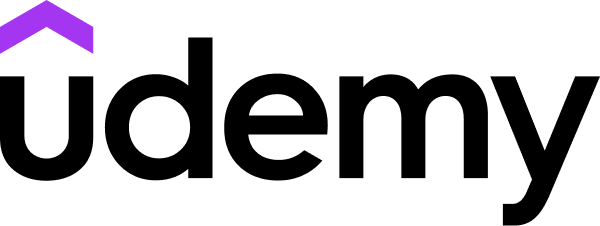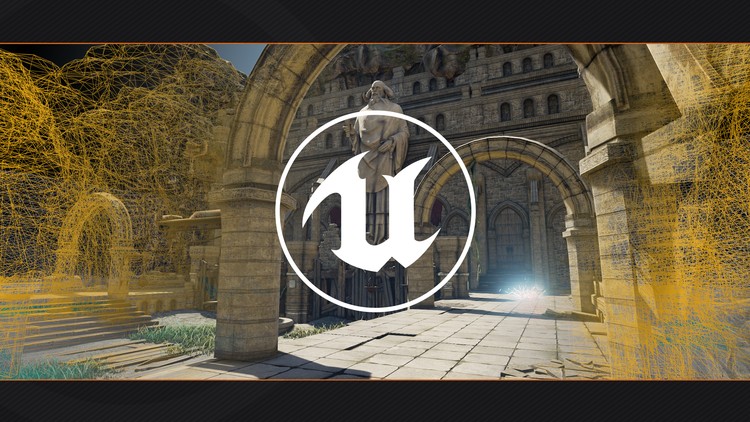Course overview
- Provider
- Udemy
- Course type
- Paid course
- Level
- Beginner
- Duration
- 31 hours
- Lessons
- 147 lessons
- Certificate
- Available on completion
- Course author
- Michael Gerard
-
- Importing objects and textures to the library (Content Browser)
- Getting familiar with the software
- Know the different types of lights and understand what consumes the most performance
- Create simple and advanced materials
- Understanding the interest of master materials and instances
- Programming gameplay events and building objects to place in levels with the Blueprint.
- Import, configure and make a character playable.
- Create a simple artificial intelligence that follows the player or makes random patrols.
- Know the needs of our character with progress bars.
- Create a pause menu with graphic and resolution settings.
- Create a startup menu.
- Configure and control a vehicle.
- Create rain, snow particles and associated effects (wet effect and snow build-up)
- Importing standard and Open World terrains (Tiled)
- Create automatic landscape materials with automatic vegetation placement
- Explore the Quixel Megascans library and learn how to export objects from Quixel Bridge to UE4
- Create a natural scene with procedural placement of trees.
- Setting up a volumetric fog
- Configure the general atmosphere of a level with the Post Process
- Create unique HDRs directly from the engine with Nvidia Ansel plugin
Description
In this course we will take a look at the most powerful engine in the market that has enabled the creation of many titles in the video game industry, including the monster we no longer present, Fortnite.
My goal with this guide is to let you see, first of all, the main lines of what the Unreal Engine 4 can allow you to do.
Secondly, I will let you guide future updates to this course with your feedback and choices about the categories you want to learn more about.
This approach allows me to ensure the longevity of the course by adding more and more content, but also the certainty that the new parts will be approached with real interest since you will have chosen them.
In this course, we'll see a lot of things together such as:
Installation and what you need to know about the different versions of the engine.
The basics including the interface, camera movements, object manipulation and Unreal's own folder logic that you need to know if you don't want to corrupt your projects.
Available Modes including Vertex Painting which allows you to paint a texture directly on a model.
The different types of lights, their uses and what you need to know to avoid performance loss.3
Materials and although complex, we will manage to create, step by step, an advanced material without any prior knowledge.
Objects in the video game and avoid the traps when creating or selecting your models.
The Blueprint, Unreal's own programming which beyond allowing the development of gameplay functionalities, allows you to create actors to be placed directly in the levels like the classic automatic opening door.
Characters, their animations, as well as classic features such as jumping, walking, running and we will allow him to see in the dark with a flashlight.
We will take advantage of this section to configure two standard Artificial Intelligence, programmed to follow our player or make patrols at random points.
The HUD or Heads-Up Display will allow us to watch from the corner of the screen, the hunger of our character or his endurance level with two progress bars.
We will also set up a pause menu with the possibility to change the graphic settings or the screen resolution. And we will end up with another classic, the startup menu for our project.
Particles in a native way with Cascade and in a more advanced way with the Niagara plugin.
The Landscapes starting with the tools offered by the engine. Then we will create together a material with an automatic vegetative pose and a logical hierarchy so that the grass will always be on top, the rock below and the soil in between.
We will end this course by creating a small natural scene in which we will come and place our trees in a procedural way.
And we will give it a real cachet by adding a volumetric fog, activating dynamic indirect light and adjusting our Post Process to obtain a rich rendering and shadows faithful to the ambient light.
For more fidelity of our light, I will show you how to create your own Cube Map or HDR with Nvidia's plugin, Ansel
Updates already planned are listed below. Please note that this list is non-exhaustive and does not represent the order of release of future updates:
Decals
Sounds and sound effects
Project Package (creation of a .exe of the project)
Generating a source version of the Unreal Engine (Visual Studio required)
Destruction Plugin "Chaos"
An architectural scene
Discovering the major new features of each new version of the engine.
Synchronizing the project with Github
This course was created in version 4.25.3 and it is STRONGLY RECOMMENDED to use the SAME version! If you choose to use a different version, be aware that you may encounter possible unprocessed errors in this course.
Similar courses

-
10 hours
-
78 lessonsCertificate

-
35 hours
-
230 lessonsCertificate


